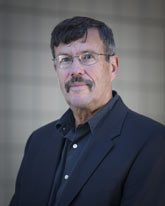

Friday - July 16, 2010
SLAC Today is
available online at:
http://today.slac.stanford.edu
In this issue:
From the Director of the Accelerator Directorate
FACET Receives CD-2, CD-3 Status
Word of the Week: Bose-Einstein Condensate
 |
 |
|
Friday - July 16, 2010 |
From the Acting Director of the Accelerator Directorate: A Work in Progress (Photo by Brad Plummer.)
It has been nearly a year since SLAC underwent the major organizational change that created the large Accelerator Directorate (AD). At the directorate's inception, the stated AD's vision was to "create an environment that fosters globally-recognized leadership in accelerator science and technology capabilities for development of future electron-based accelerators while enabling forefront user research and accelerator R&D programs today." Two primary missions for achieving that vision are also stated: 1) "Deliver beams safely and effectively in support of today's research programs based on world class operational performance and insightful anticipation of programmatic needs," and 2) "Deliver client value in an R&D portfolio for accelerator science and key technology capabilities to ensure SLAC remains the laboratory of choice when establishing future accelerators at the frontier of science." Thinking about the AD vision after a year of existence, I have to admit that I still find it a compelling and accurate statement of what we should strive for in the directorate. Embedded in it are the multiple operational, engineering, technical and scientific purposes we serve. The mission statements, while somewhat fancily worded, also capture the essence of a large fraction of the AD's endeavors. Although it might be implied in the first mission statement, I believe a third explicit mission statement is needed to reflect another critical aspect of the AD's mandate: 3) "Provide effective centralized engineering and technical services for the entire lab that are aligned to SLAC's strategic goals." I hope the wordsmith that forged the first two mission statements can help with the third one. Read more... FACET Receives CD-2, CD-3 StatusFACET will transform the first two-thirds of the
linac into a test bed for advanced accelerators. (Photo by Brad
Plummer.)
Earlier this week, the Department of Energy approved "Critical Decisions" 2 and 3 for the Facility for Advanced aCcelerator Experimental Tests at SLAC, or FACET, project. These milestones recognize that FACET has an established cost, schedule and design, and authorize the start of construction. "The whole FACET team did a terrific job preparing for CD-2/3 and came through the review with flying colors," said FACET Project Manager Nan Phinney. FACET Experimental Scientist Mark Hogan agreed: "The science community is eagerly awaiting this machine, and we're very much looking forward to taking the project from concept to reality." Every DOE project over $5 million works its way through five critical decisions during its planning and construction phases. The final milestone, known as CD-4, certifies the end of construction and authorizes the start of operations. When experiments begin next summer, FACET will use the first two-thirds of the SLAC linac as a test bed for research into plasma wakefield acceleration, a promising new approach to higher accelerating gradients. Accelerating electrons on waves of plasma has the potential to increase the acceleration per meter by as much as 1,000 times compared to existing accelerators. FACET will also support a broad user program in accelerator science, materials science, high-energy density physics and other fields of research that can make significant advances using the unique high energy and small size of the FACET beams. From left to right in this image, lengthening spires indicate ever-cooler temperatures and ever more atoms occupying the same quantum energy level.
(Image courtesy NIST.)
Word of the Week: Bose-Einstein CondensateA Bose-Einstein condensate, first proposed in 1925 by Albert Einstein based on work done by Satyendra Nath Bose (the same Bose from whom the term boson is derived), is a super-cold state of matter in which almost all of the individual atoms have "condensed" down to the lowest possible quantum energy level. Steal all their energy by cooling them to a few hundred-millionths of a degree above absolute zero, and atoms will suddenly collapse in on themselves, huddling together like penguins in a blizzard—but with a very important difference. Under their coats of snow, penguins only look alike. In a Bose-Einstein condensate, the atoms are alike. Exactly alike. There is no known measurement or observation that can tell them apart—not even their locations. In the parlance of quantum mechanics, the wave functions of the atoms have all merged, turning millions of individual atoms into a single entity. Bose-Einstein condensates are the quantum world made visible to human eyes. |
Events
Access (see all)
Announcements
|
|
| | ||
|
|
||
 <%
Response.AddHeader "Last-modified", getArticleDate()
'Response.AddHeader "Last-modified","Mon, 01 Sep 1997 01:03:33 GMT"
'Monday, December 06, 2010
%>
<%
Response.AddHeader "Last-modified", getArticleDate()
'Response.AddHeader "Last-modified","Mon, 01 Sep 1997 01:03:33 GMT"
'Monday, December 06, 2010
%>View online at http://today.slac.stanford.edu/. |
||